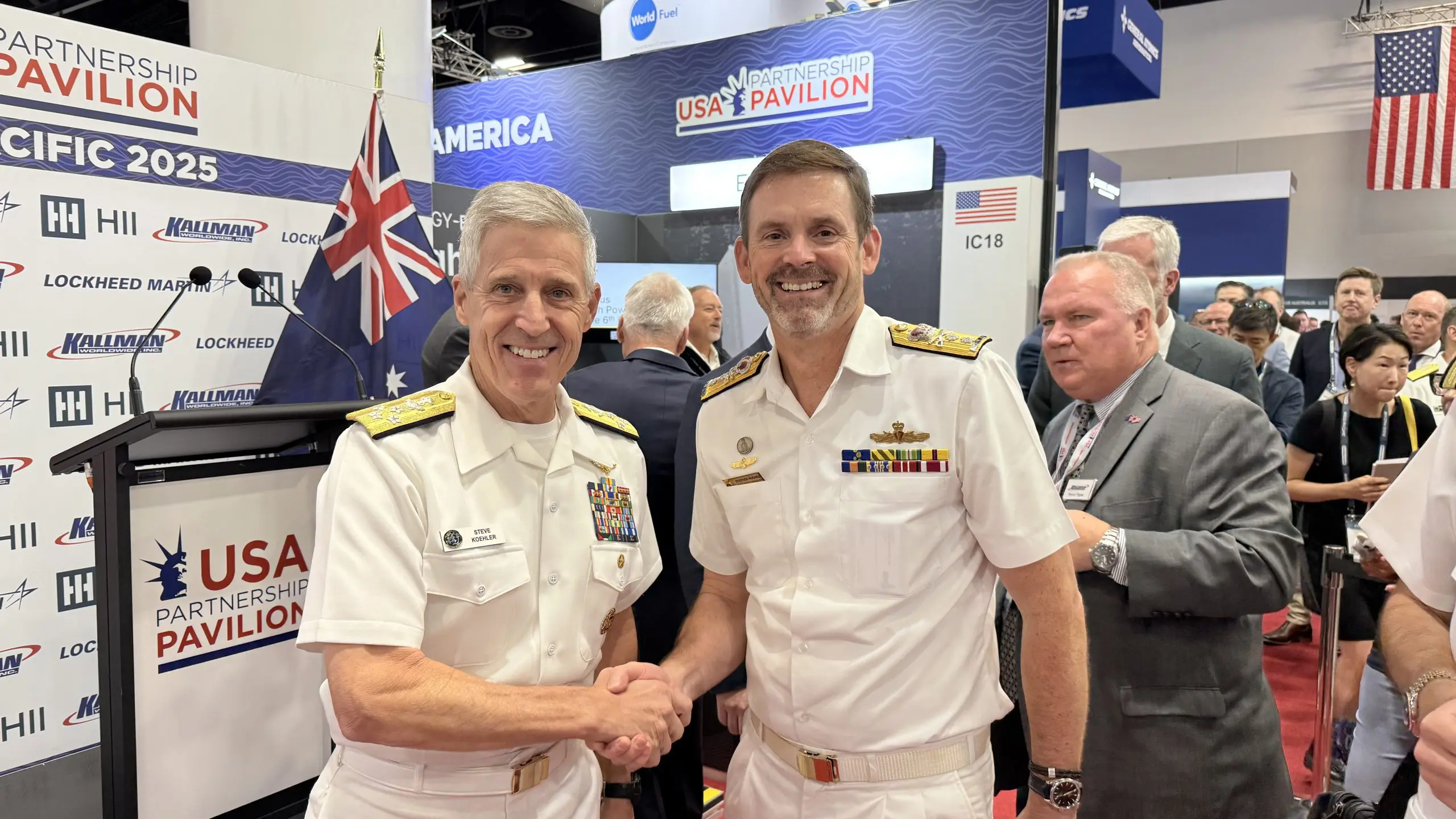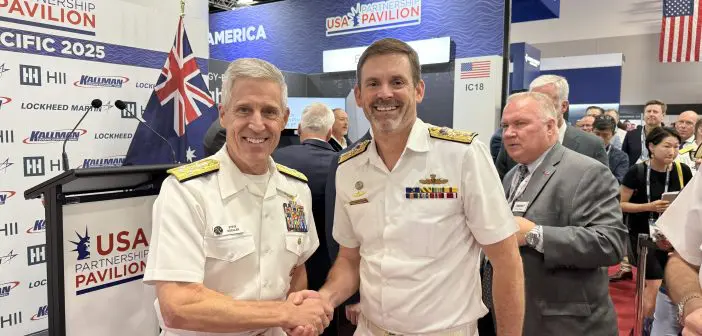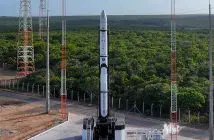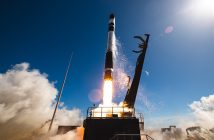
The Indo Pacific 2025 International Maritime Exposition opened in Sydney today with a strong message of innovation, partnership, and technological edge as senior representatives from the United States Navy and the Royal Australian Navy addressed attendees at the USA Pavilion.
Admiral Stephen Koehler, United States Navy, and Rear Admiral Stephen Hughes, Royal Australian Navy, shared a unified vision for collaboration, emphasising the strength of the U.S.–Australia alliance and the critical role of rapid innovation, multi-domain integration, and resilient defense capabilities in maintaining security across the Indo-Pacific region.
Admiral Koehler underscored the urgency of sustaining a technological advantage amid an evolving battlespace. “We maintain a dominant posture in a battle space that is evolving faster than any other time in history,” he said.
Highlighting the role of multi-domain operations—spanning land, sea, air, space, cyber, and information—he stressed that speed of decision, information, and adaptation are now as vital as physical speed. “We must operate inside an ever-expanding enemy weapons engagement zone with systems built for resilience,” Koehler added.
He praised the vitality of U.S. industry and its partners, noting that “innovation is part of our DNA.” Collaboration between traditional defense manufacturers, startups, and tech firms is reshaping how the U.S. and its allies co-develop, maintain, and integrate emerging systems. “We’re exploring co-production and maintenance opportunities with allies while reducing red tape—all accelerating the cycle of American innovation,” Koehler concluded.
Rear Admiral Stephen Hughes opened with his trademark Australian warmth, welcoming guests to Sydney and reflecting on the enduring partnership between the two nations. “We have worked together, fought together, and probably argued a fair bit together,” he said, drawing laughter from the crowd. “But it’s a partnership ingrained in our collective DNA.”
Hughes emphasised that the alliance is not only about shared capabilities but also about personal trust and human connection. He urged industry and defense partners to “go find those opportunities” within the AUKUS Pillar II framework, which focuses on technology sharing and industrial cooperation beyond nuclear submarines.
“Australia has some really clever people here,” Hughes said. “It’s not just about minerals or tech—it’s about people.” He highlighted the rapid advancements of the Royal Australian Navy, including the first SM-6 missile firing from an Australian destroyer and the first Tomahawk missile launch in late 2024, both achieved in close cooperation with the U.S. Navy. “We are now that little bit more lethal—and a little bit closer to being able to take the fight on.”
Hughes closed on a characteristically light note, advising visiting delegates to enjoy Sydney’s beaches safely: “Swim between the flags, be safe, and enjoy what this great country has to offer.”
The opening ceremony at the USA Pavilion captured the shared strategic vision between the United States and Australia—rooted in trust, shared values, and a mutual commitment to innovation and resilience.
From Admiral Koehler’s call for rapid adaptation and cross-domain integration to Admiral Hughes’ focus on partnership and shared ingenuity, both leaders signalled that the Indo-Pacific alliance is entering a new phase of technological cooperation and industrial integration.
As the exhibition floor buzzed with demonstrations of advanced maritime systems, autonomous technologies, and defense innovation, it was clear that the message from both admirals resonated: the future of maritime security depends on speed, integration, and enduring partnership.
Australia in Space – Space & Defence are Media Partners to Indo Pacific 2025 (Photo Credit: Space & Defence)
#IndoPacific2025 #USNavy #RoyalAustralianNavy #Innovation #Partnership #AUKUS #DefenceIndustry #Sydney

USA Pavilion, Indo Pacific 2025





